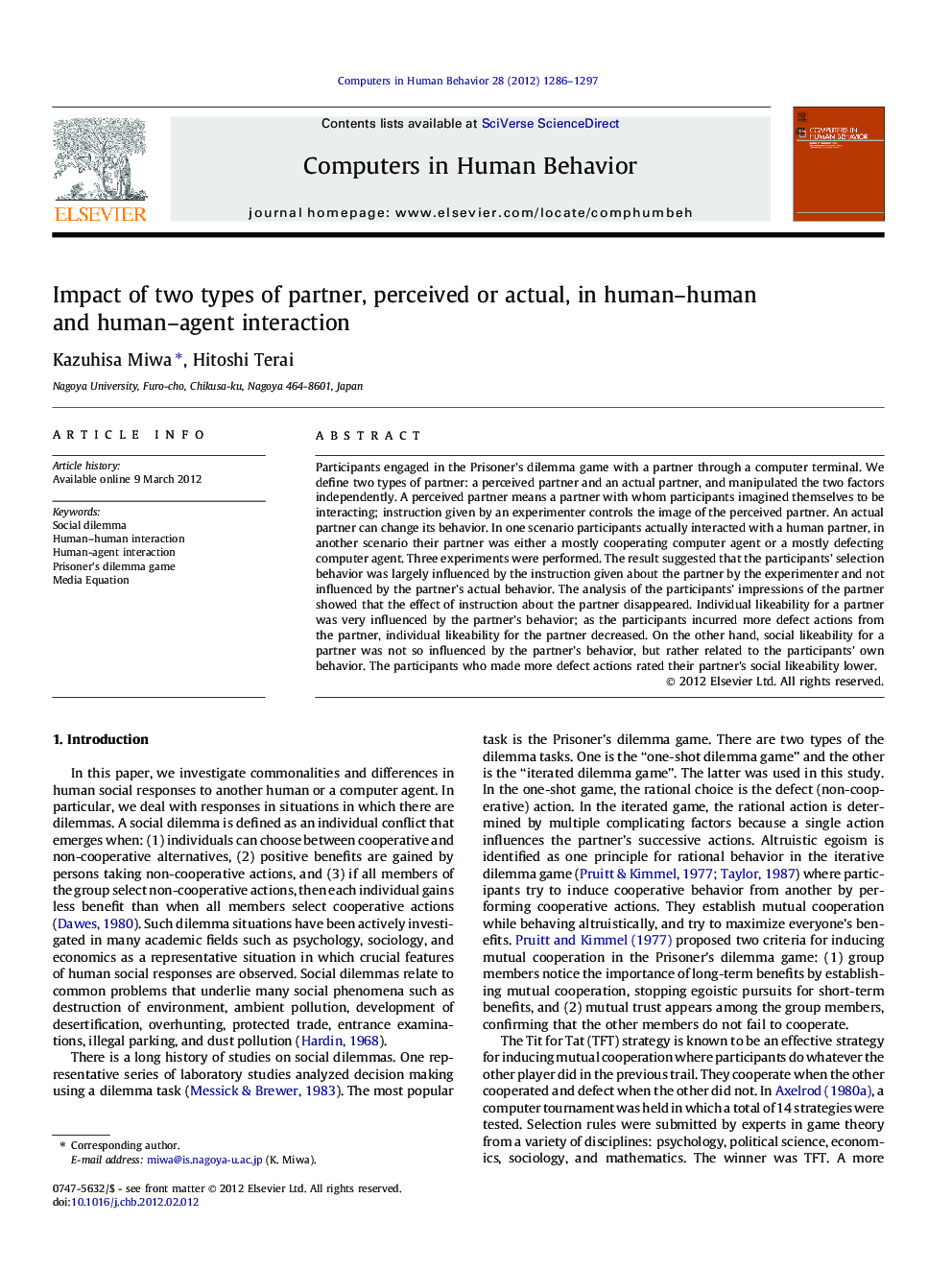| کد مقاله | کد نشریه | سال انتشار | مقاله انگلیسی | نسخه تمام متن |
|---|---|---|---|---|
| 351389 | 618469 | 2012 | 12 صفحه PDF | دانلود رایگان |

Participants engaged in the Prisoner’s dilemma game with a partner through a computer terminal. We define two types of partner: a perceived partner and an actual partner, and manipulated the two factors independently. A perceived partner means a partner with whom participants imagined themselves to be interacting; instruction given by an experimenter controls the image of the perceived partner. An actual partner can change its behavior. In one scenario participants actually interacted with a human partner, in another scenario their partner was either a mostly cooperating computer agent or a mostly defecting computer agent. Three experiments were performed. The result suggested that the participants’ selection behavior was largely influenced by the instruction given about the partner by the experimenter and not influenced by the partner’s actual behavior. The analysis of the participants’ impressions of the partner showed that the effect of instruction about the partner disappeared. Individual likeability for a partner was very influenced by the partner’s behavior; as the participants incurred more defect actions from the partner, individual likeability for the partner decreased. On the other hand, social likeability for a partner was not so influenced by the partner’s behavior, but rather related to the participants’ own behavior. The participants who made more defect actions rated their partner’s social likeability lower.
Highlight
► Participants engaged in a dilemma game with a computer agent or a human.
► Instruction about a partner affected the participants’ decision behavior.
► Partner’s behavior did not affect the participants’ decision behavior.
► Individual likability of a cooperating partner was higher.
► Social likability was higher when the participants made more cooperate actions.
Journal: Computers in Human Behavior - Volume 28, Issue 4, July 2012, Pages 1286–1297